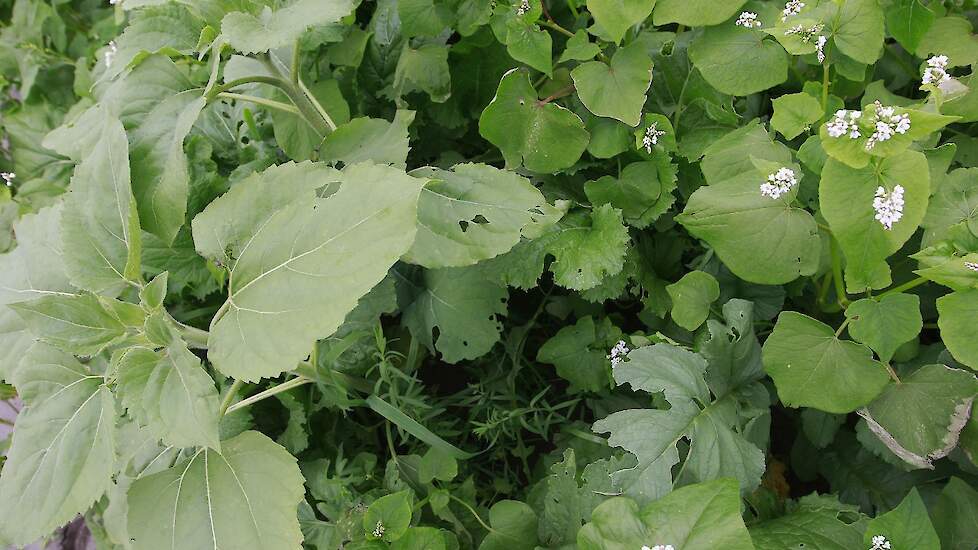Profytodsd is experimenting with growers with mixed crops. A special project is the cultivation of seed potatoes together with facelia, Persian clover, buckwheat, flax and summer vetch. The plants between the seed potatoes serve as protection against pests and diseases. According to Profytodsd’s Conner Pelgrim, the system is primarily aimed at lowering air pressure. What it does for tuber health and against phytophthora, Profytodsd will follow this season.

In the Profytodsd experiment, besides buckwheat, Persian clover, facelia, summer vetch and flax are used.
Image: Susan Rexwinkel
During the SPNA Knowledge Sharing meeting, Conner Pelgrim explained the mixed crops that the company has been testing with growers in recent years and about the plans to do even more special things with them. According to Pelgrim, the mixed crops can go further than the combination of a legume flower with a grain, in which the legume flower binds nitrogen for both crops. Incidentally, in practice it turned out that successful mixed cultivation can still be quite difficult.
Sowing a nitrogen binder in a crop did not always go well. Pilgrim: “Under-sowing a grass is easier than a nitrogen binder. Unexpected things can play a role, such as a lot of rain after sowing. That then has major consequences. In Flevoland, a crop of wheat with clover failed due to the poor rise of the clover. In North Groningen we tried wheat with field bean. When a lot of rain came after the sowing, the ground slackened. For this year we sowed triticale together with winter field bean. The weed control with Stomp had an effect on the winter hardiness of the field bean. ” In practice, there are some bumps in mixed crops, these cases show.
Late blight
A grower in the United States grows potatoes without pesticides against phytophthora. He used other crops, sown among the potatoes, to prevent the spread of the late blight. Profytodsd also wanted to test whether this works under Dutch conditions. Pilgrim is careful about this, because the climate conditions in America are very different from the Netherlands. In the cultivation area in the US, the summers are warm and dry and the water fungus that causes phytophthora cannot survive as well as in the maritime climate of the Netherlands.
The Profytdsd experiment primarily follows what mixed cultivation does with the louse pressure in the seed potatoes. Lice spread virus. The seed potatoes must be virus-free for export. Pilgrim: “We hope to stimulate more biology with mixed cultivation. That could result in more stable crop growth.
Perhaps we will get healthier tubers and less rhizoctonia and we hope for a lower phytophthora pressure, but the latter will work less well here, we think. ” For the experiment Profytodsd used facelia ,, Persian clover, buckwheat, summer vetch and flax between the poters. “Last season we sowed these crops on two hectares between the potatoes with an APV. That failed, because the plants were cut to pieces. That is why we are doing it again this year, but with milling immediately after planting. ”

The idea behind this experiment is to make the step towards an integrated system, says Pelgrim. “As a company, we have come quite far with this and are making plans for integrated cultivation in consultation with growers.” He expects the extra biodiversity to contribute to a more resilient system and to stimulate soil life. Incidentally, only the seed potato harvest will be important for the yield. The rest is for the interaction with the soil and above-ground biology. “We hope this year for a better result with the test. If we mill immediately after planting, most of the seeds will be able to germinate well. That can also be done on the side of the back. ”


